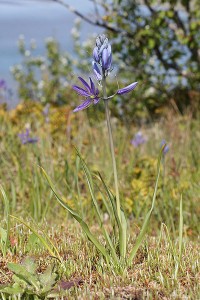by Woodsbum
Another plant that is found in the Pacific Northwest is clover. This plant can be eaten in a variety of ways. Here is a great picture of clover in bloom.

Clover
Clover grows in all sorts of terrain, but look in disturbed soil areas. The four varieties that grow here are the red, alsike, white and springbank clovers. Each one is edible, although red clover should be avoided in fall due to alkaloids.
Just be aware that it can be difficult to digest and can cause bloating.








